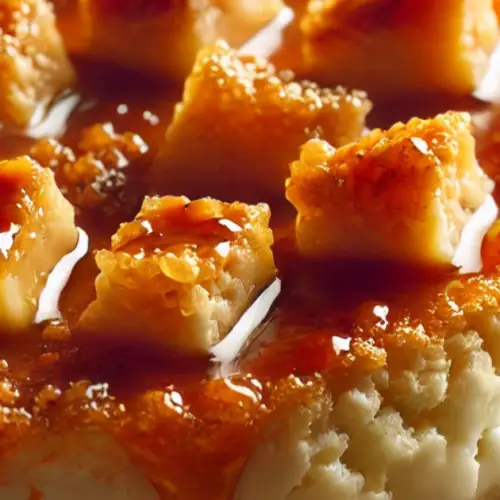Fast food is a cornerstone of modern life, a quick and convenient solution to the eternal question: “What’s for dinner?” From greasy burgers flipped in minutes to plant-based patties engineered for sustainability, the fast food industry has undergone a remarkable transformation since its humble beginnings. What started as a novel idea to serve food quickly has evolved into a global phenomenon, reflecting changes in technology, culture, health consciousness, and economics. Let’s take a journey through time to explore how fast food has changed over the years and what it says about us as a society.
The Early Days: A Need for Speed
The concept of fast food isn’t as modern as we might think. Its roots stretch back centuries to ancient civilizations. In Rome, bustling urbanites grabbed quick bites from street vendors selling bread and olives or meat stews from roadside stalls known as thermopolia. Medieval Europe had its own version with pie shops and taverns offering portable meals to travelers. But the fast food we recognize today—standardized, mass-produced, and served at lightning speed—began to take shape in the early 20th century.
The turning point came with the rise of the automobile and the changing pace of life in the United States. In 1921, White Castle opened its doors in Wichita, Kansas, often credited as America’s first fast food chain. With its tiny, square “sliders” priced at just five cents each, White Castle catered to a growing working-class population hungry for affordable, no-fuss meals. The chain pioneered a standardized menu and assembly-line cooking, ideas that would define the industry. White Castle’s success wasn’t just about food; it was about branding and trust. At a time when food safety was a concern, its clean, white-tiled interiors reassured customers that their meals were hygienic.
The 1940s and 1950s saw the fast food revolution accelerate, driven by suburban sprawl, car culture, and post-World War II prosperity. Enter McDonald’s, the name that would become synonymous with the industry. Originally a barbecue drive-in opened by brothers Richard and Maurice McDonald in 1940, it transformed in 1948 into a streamlined burger joint. Their “Speedee Service System” slashed wait times by focusing on a limited menu—burgers, fries, and shakes—prepared in an assembly-line format. This innovation caught the eye of Ray Kroc, a milkshake machine salesman who bought the franchise rights in 1954 and turned McDonald’s into a global empire. By 1955, the Golden Arches were popping up across America, symbolizing efficiency, consistency, and affordability.
The Golden Age: Expansion and Excess
The mid-20th century was fast food’s golden age. Chains like Burger King (founded 1954), Wendy’s (1969), and Taco Bell (1962) joined the fray, each carving out a niche—flame-broiled Whoppers, square patties, or faux-Mexican tacos. Drive-thrus became ubiquitous, catering to a nation on wheels, while colorful mascots like Ronald McDonald and the Burger King entertained kids and cemented brand loyalty. Fast food wasn’t just a meal; it was an experience, a slice of the American Dream served with a side of fries.
This era was marked by unchecked growth and indulgence. Menus expanded beyond burgers to include fried chicken (KFC, founded 1952), pizza (Domino’s, 1960), and subs (Subway, 1965). Portion sizes ballooned—think McDonald’s “Supersize” option introduced in 1993—and calories piled up. Fast food became a cultural juggernaut, with chains exporting American tastes worldwide. By the 1980s, McDonald’s had outlets in over 50 countries, turning the Big Mac into a global icon.
Technology played a starring role in this expansion. Advances in food preservation, like frozen fries and pre-cooked patties, allowed chains to maintain consistency across thousands of locations. Refrigerated trucking and industrial kitchens turned local experiments into scalable empires. Meanwhile, marketing grew savvier, with TV ads and Happy Meals luring families through the doors. Fast food wasn’t just feeding people; it was shaping lifestyles.
The Backlash: Health and Accountability
By the late 20th century, the cracks in the fast food facade began to show. The industry’s focus on cheap, high-calorie food collided with a growing awareness of nutrition and obesity. In the U.S., the obesity rate doubled between 1980 and 2000, and fingers pointed at fast food as a culprit. A 2001 study by the National Institutes of Health linked frequent fast food consumption to higher risks of obesity and type 2 diabetes, sparking public outrage.
The 2004 documentary Super Size Me, in which filmmaker Morgan Spurlock ate only McDonald’s for 30 days and documented his declining health, crystallized these concerns. Lawsuits followed, with chains accused of misleading marketing and failing to warn consumers about nutritional risks. McDonald’s faced a high-profile case in 2002 when two teens sued, claiming its food caused their obesity—though the case was dismissed, it signaled a shift. Fast food was no longer untouchable.
In response, the industry began to adapt. McDonald’s axed the Supersize option in 2004 and rolled out salads, apple slices, and oatmeal. Burger King offered veggie burgers, while Wendy’s touted “fresh, never frozen” beef to distance itself from processed stereotypes. Calorie counts appeared on menus, spurred by regulations like the Affordable Care Act’s 2010 mandate. Fast food wasn’t abandoning its roots, but it was learning to coexist with a more health-conscious public.
The Modern Era: Customization and Innovation
Today’s fast food landscape is a far cry from the burger-and-fries monotony of the 1950s. The 21st century has brought unprecedented variety, driven by changing tastes, technology, and global influences. Chains now cater to diverse palates with spicy chicken sandwiches (Popeyes’ viral 2019 hit), plant-based burgers (Burger King’s Impossible Whopper), and international flavors like McDonald’s McSpicy Paneer in India.Customization is king—think Chipotle’s build-your-own burritos or Starbucks’ dizzying array of coffee combos.
Technology has turbocharged this evolution. Mobile apps let customers order ahead, skipping lines, while delivery services like Uber Eats and DoorDash bring fast food to your door. Kiosks and AI-driven menus, like those trialed by McDonald’s, suggest items based on weather or time of day. Behind the scenes, robotics and automation streamline kitchens, reducing labor costs and human error. In 2023, Taco Bell unveiled a fully automated drive-thru in Minnesota, hinting at a future where staff might be optional.
Sustainability has also entered the conversation. As climate concerns grow, chains are rethinking their footprints. McDonald’s pledged to cut greenhouse gas emissions by 36% by 2030, while KFC experiments with lab-grown chicken. Plant-based options, once a niche, are mainstream—Beyond Meat and Impossible Foods have partnered with giants like Dunkin’ and Carl’s Jr., appealing to vegans and flexitarians alike. Packaging is shifting too, with biodegradable trays and strawless lids replacing plastic.
Yet, fast food hasn’t lost its core appeal: speed and value. The rise of “fast casual” chains like Panera Bread and Shake Shack offers a middle ground—higher quality at a slightly higher price—but the classics endure. In 2024, McDonald’s reported $52 billion in global revenue, proving that even amid change, the demand for a quick, cheap bite remains unshaken.
Cultural Shifts: From Guilty Pleasure to Social Staple
Fast food’s role in society has evolved as dramatically as its menus. Once a treat or a guilty pleasure, it’s now a daily ritual for millions. In the U.S., a 2023 CDC report found that 36.6% of adults eat fast food on any given day, a figure that’s held steady despite health warnings. It’s a lifeline for busy parents, late-night workers, and budget-strapped students. Globally, it’s a symbol of modernity—China’s KFC outlets outnumber America’s, a testament to its cultural penetration.
Social media has amplified fast food’s reach. TikTok and Instagram fuel menu hacks (like the “secret” McDonald’s Land, Air, and Sea Burger) and viral crazes (Popeyes’ chicken sandwich frenzy). Chains lean into this, partnering with influencers and dropping limited-time offerings to stay relevant. Yet, this visibility cuts both ways—X posts regularly call out brands for labor practices or environmental lapses, forcing accountability in real time.
Fast food has also mirrored economic tides. During the 2008 recession, chains thrived as diners traded down from sit-down restaurants. The COVID-19 pandemic in 2020 cemented this resilience—while dine-in spots shuttered, drive-thrus and delivery boomed. In 2022, inflation pushed menu prices up (a Big Mac hit $5.81 on average), yet value meals and loyalty apps kept customers coming.
The Future: What’s Next for Fast Food?
As we look ahead from February 21, 2025, fast food’s evolution shows no signs of slowing. Artificial intelligence could personalize orders down to your last bite, while drone delivery—already tested by Domino’s—might make drive-thrus obsolete. Lab-grown meat and 3D-printed food could redefine “fresh,” blending sustainability with convenience. Health trends may push chains further toward nutrient-dense options, like protein-packed bowls or low-carb wraps.
But challenges loom. Labor shortages and rising wages are driving automation, raising questions about jobs. Climate pressures will demand greener supply chains, potentially clashing with the low-cost model. And as consumers grow savvier, transparency—about ingredients, sourcing, and ethics—will be non-negotiable.
Fast food’s journey from White Castle’s nickel sliders to today’s Impossible Whoppers is a story of adaptation. It’s thrived by meeting people where they are—whether that’s a 1950s roadside or a 2025 app. Through wars, recessions, and revolutions, it’s remained a constant, evolving yet familiar. Love it or loathe it, fast food isn’t just food; it’s a mirror of our times, reflecting who we are and where we’re going. And as long as life moves fast, it’ll keep serving up solutions—one quick bite at a time.
Suggested References for “The Evolution of Fast Food: How It’s Changed Over the Years”
Historical Context and Early Fast Food
- White Castle and the Birth of Fast Food
- Schlosser, E. (2001). Fast Food Nation: The Dark Side of the All-American Meal. Houghton Mifflin Harcourt.
- This book provides a detailed history of the fast food industry, including White Castle’s role as a pioneer.
- White Castle Official Website: Historical Timeline (https://www.whitecastle.com/about-us/history).
- Schlosser, E. (2001). Fast Food Nation: The Dark Side of the All-American Meal. Houghton Mifflin Harcourt.
- McDonald’s and the Speedee Service System
- Kroc, R., & Anderson, R. (1977). Grinding It Out: The Making of McDonald’s. St. Martin’s Paperbacks.
- Ray Kroc’s autobiography offers an insider’s view of McDonald’s early innovations.
- Love, J. F. (1995). McDonald’s: Behind the Arches. Bantam Books.
- A comprehensive history of McDonald’s growth and standardization.
- Kroc, R., & Anderson, R. (1977). Grinding It Out: The Making of McDonald’s. St. Martin’s Paperbacks.
Expansion and Golden Age
- Growth of Fast Food Chains
- Jakle, J. A., & Sculle, K. A. (1999). Fast Food: Roadside Restaurants in the Automobile Age. Johns Hopkins University Press.
- Explores the cultural and economic rise of fast food in the U.S.
- Jakle, J. A., & Sculle, K. A. (1999). Fast Food: Roadside Restaurants in the Automobile Age. Johns Hopkins University Press.
- Globalization of Fast Food
- Watson, J. L. (Ed.). (2006). Golden Arches East: McDonald’s in East Asia. Stanford University Press.
- Examines McDonald’s international expansion and cultural adaptation.
- Watson, J. L. (Ed.). (2006). Golden Arches East: McDonald’s in East Asia. Stanford University Press.
Health Backlash and Industry Response
- Obesity and Fast Food Studies
- Bowman, S. A., Gortmaker, S. L., Ebbeling, C. B., Pereira, M. A., & Ludwig, D. S. (2004). “Effects of Fast-Food Consumption on Energy Intake and Diet Quality Among Children in a National Household Survey.” Pediatrics, 113(1), 112-118.
- A scientific study linking fast food to health concerns.
- National Center for Health Statistics (2023). “Fast Food Consumption Among Adults in the United States, 2013–2016.” CDC Report.
- Provides data on fast food’s prevalence in modern diets.
- Bowman, S. A., Gortmaker, S. L., Ebbeling, C. B., Pereira, M. A., & Ludwig, D. S. (2004). “Effects of Fast-Food Consumption on Energy Intake and Diet Quality Among Children in a National Household Survey.” Pediatrics, 113(1), 112-118.
- Super Size Me and Public Perception
- Spurlock, M. (2004). Super Size Me. Documentary Film.
- A primary source for the health critique of fast food in the early 2000s.
- Spurlock, M. (2004). Super Size Me. Documentary Film.
- Menu Labeling Laws
- U.S. Food and Drug Administration (2010). “Menu Labeling Requirements Under the Affordable Care Act.”
- Official documentation on calorie labeling mandates (https://www.fda.gov/food/food-labeling-nutrition/menu-labeling-requirements).
- U.S. Food and Drug Administration (2010). “Menu Labeling Requirements Under the Affordable Care Act.”
Modern Innovations and Sustainability
- Plant-Based Fast Food Trends
- Impossible Foods and Beyond Meat Official Websites (https://impossiblefoods.com/, https://www.beyondmeat.com/).
- Company statements on partnerships with fast food chains.
- Impossible Foods and Beyond Meat Official Websites (https://impossiblefoods.com/, https://www.beyondmeat.com/).
- Sustainability Initiatives
- McDonald’s Corporation (2023). “2023-2030 Sustainability & ESG Goals.”
- Outlines emissions reduction targets (https://corporate.mcdonalds.com/corpmcd/our-purpose-and-impact/our-strategy.html).
- McDonald’s Corporation (2023). “2023-2030 Sustainability & ESG Goals.”
- Automation and Technology
- QSR Magazine (2023). “The Rise of Automation in Fast Food.”
- Industry analysis on robotics and AI in quick-service restaurants (https://www.qsrmagazine.com/technology).
- QSR Magazine (2023). “The Rise of Automation in Fast Food.”
Economic and Cultural Impact
- Fast Food During Economic Shifts
- Federal Reserve Bank of St. Louis (2009). “The Impact of the Great Recession on Dining Trends.”
- Economic data on fast food’s resilience (https://fred.stlouisfed.org/).
- Federal Reserve Bank of St. Louis (2009). “The Impact of the Great Recession on Dining Trends.”
- Social Media and Fast Food
- Social Media Today (2024). “How TikTok is Shaping Fast Food Marketing.”
- Discusses viral menu hacks and influencer partnerships.
- Social Media Today (2024). “How TikTok is Shaping Fast Food Marketing.”
- Global Fast Food Statistics
- Statista (2024). “Fast Food Industry Revenue Worldwide.”
- Provides current financial data (https://www.statista.com/topics/863/fast-food/).
- Statista (2024). “Fast Food Industry Revenue Worldwide.”


















